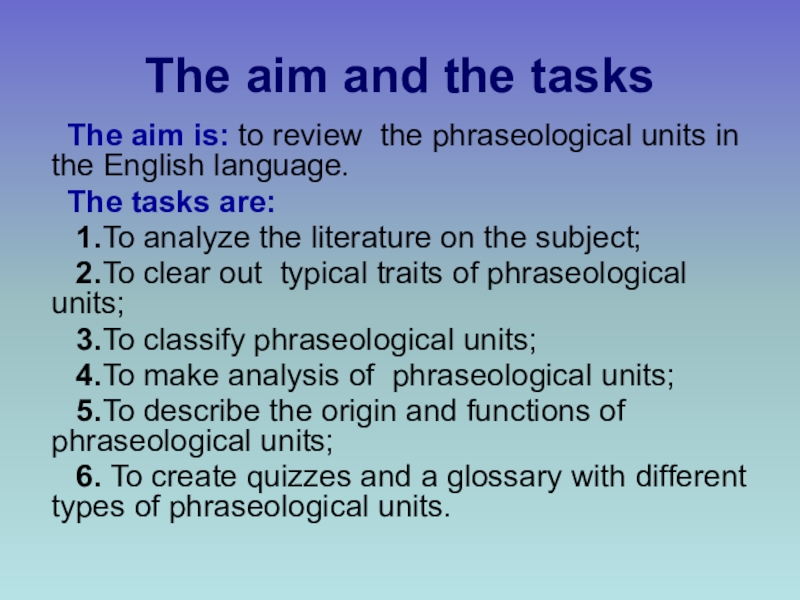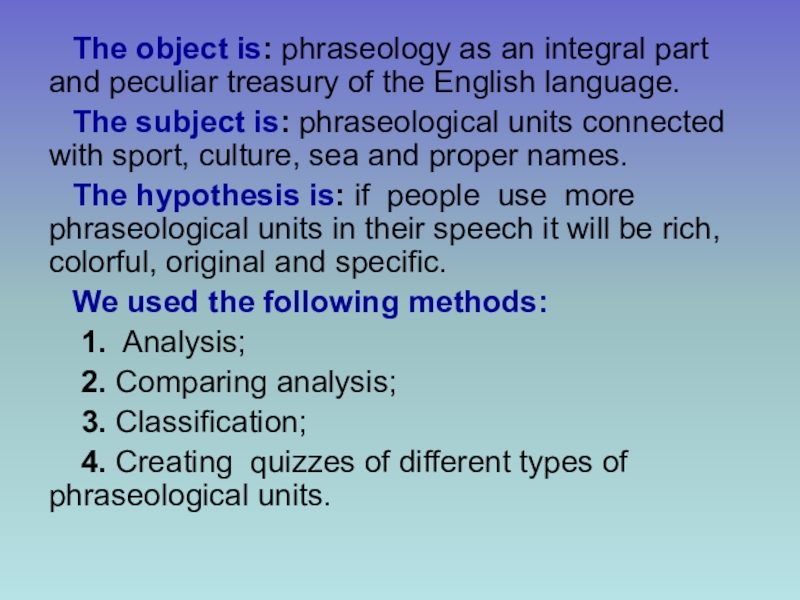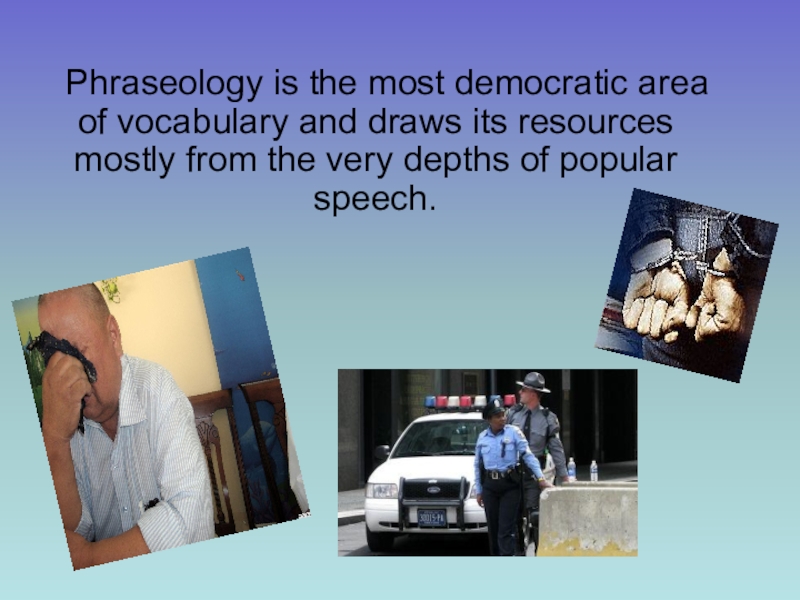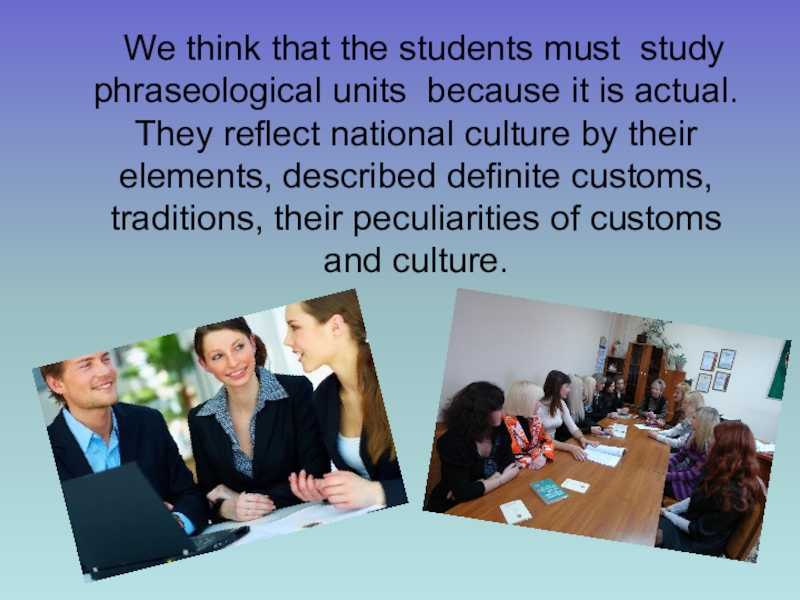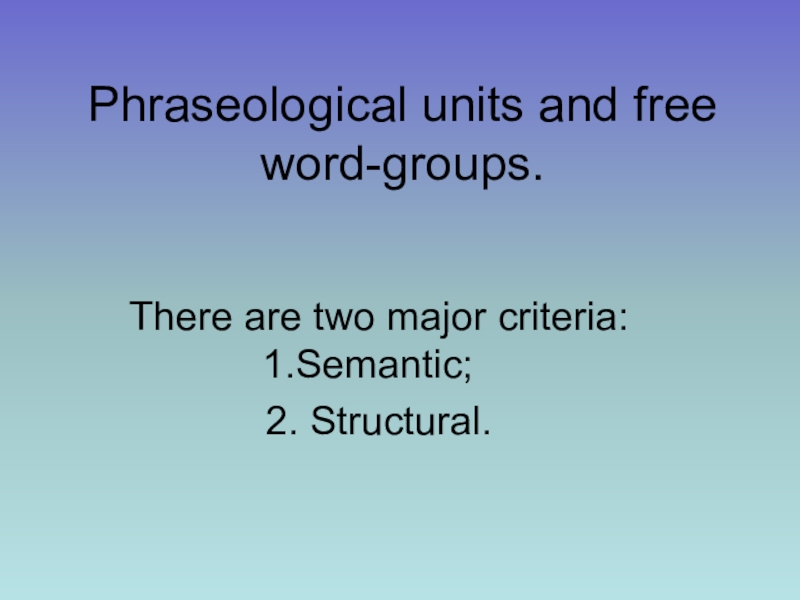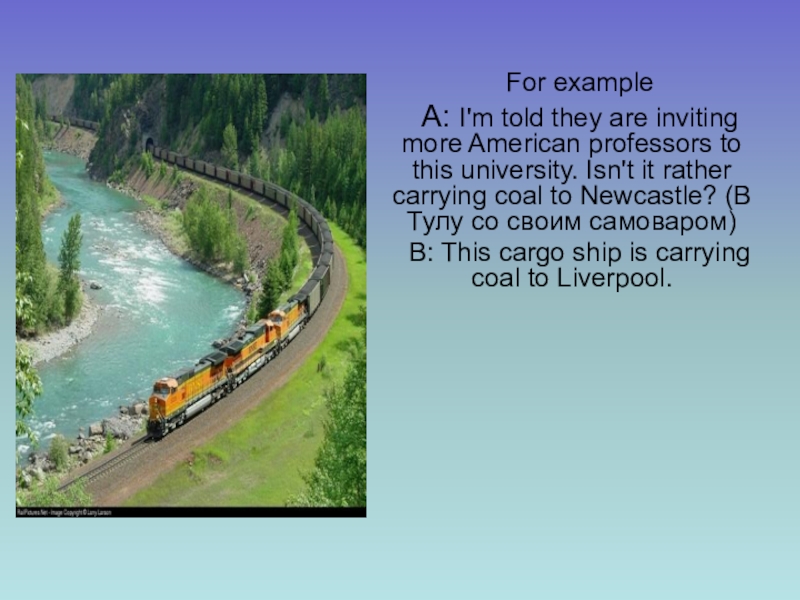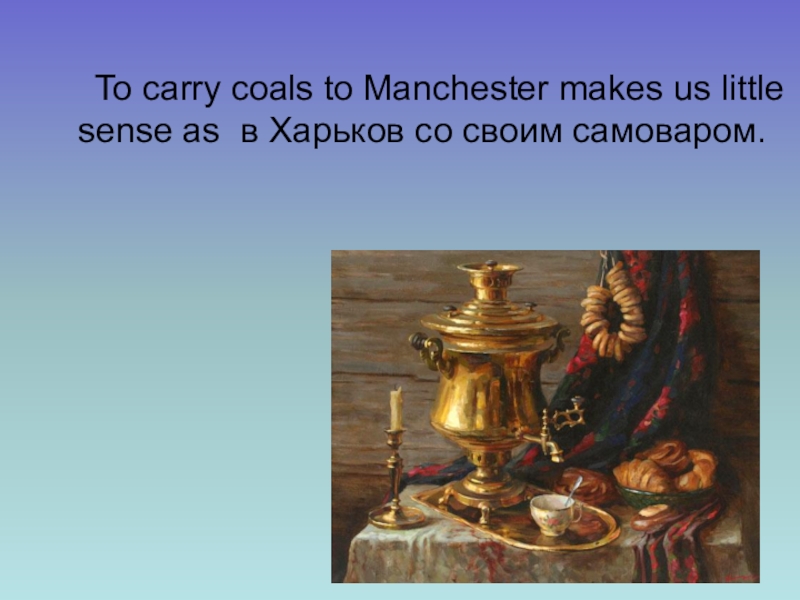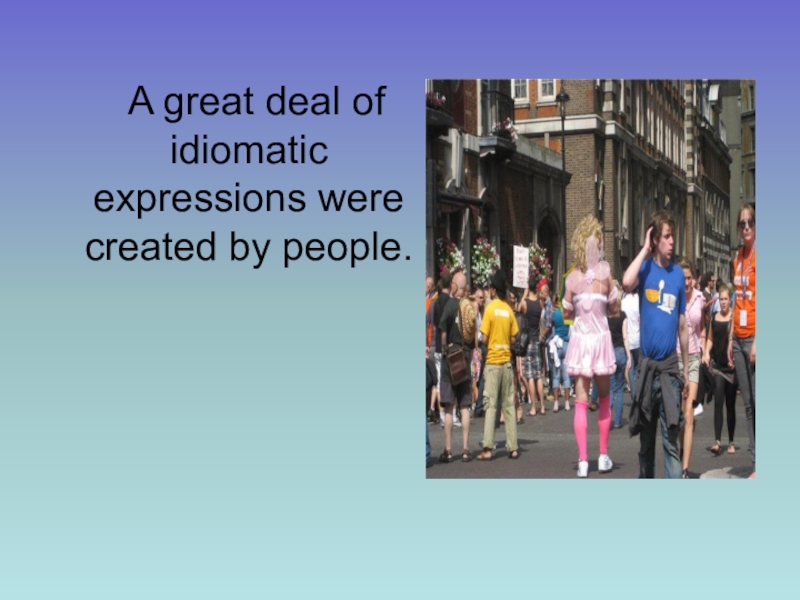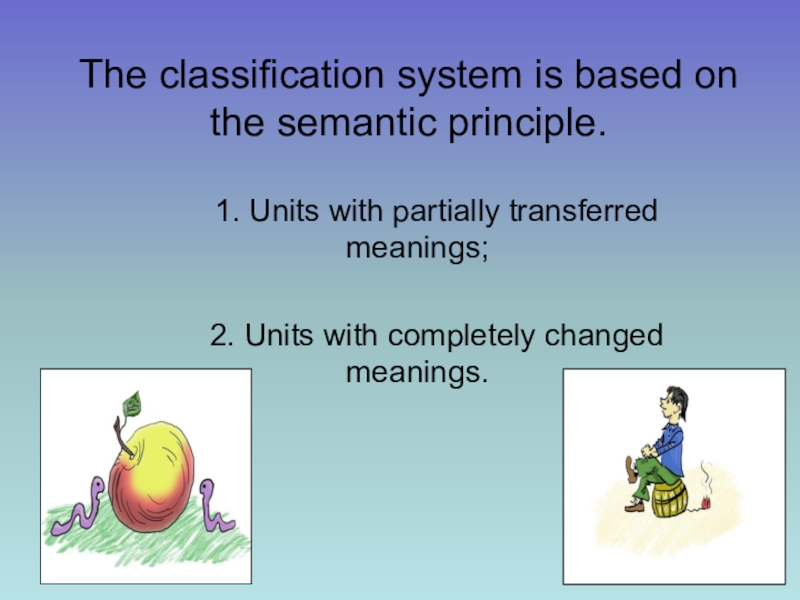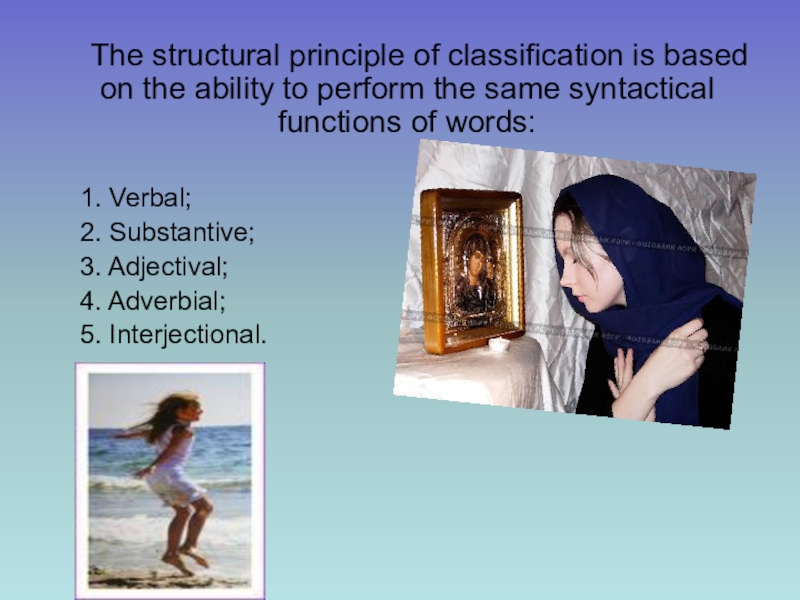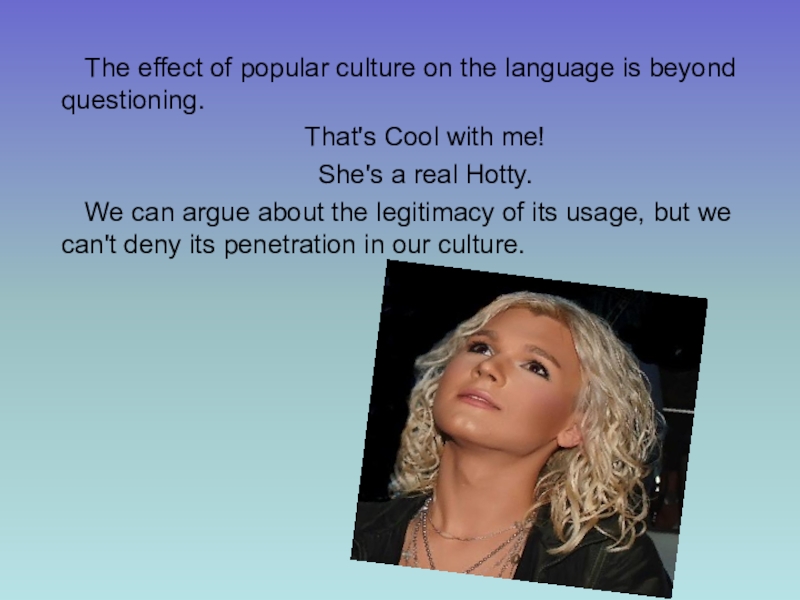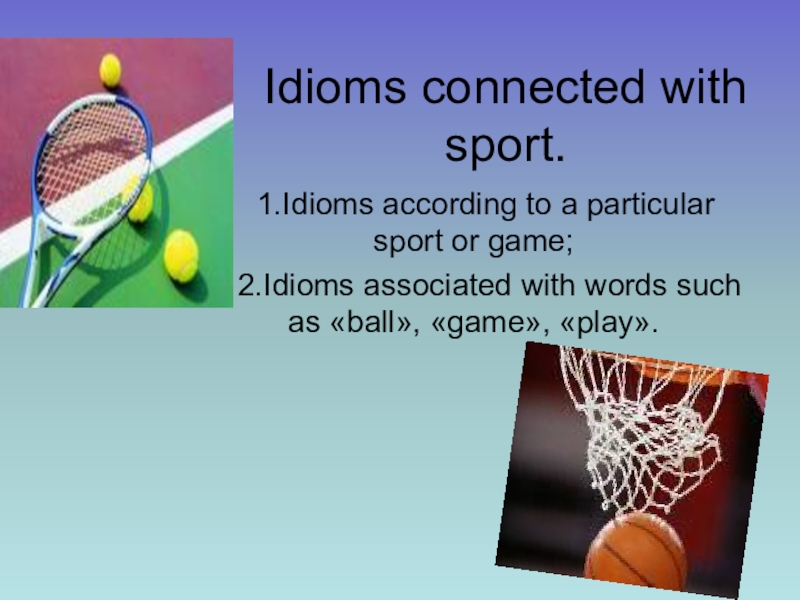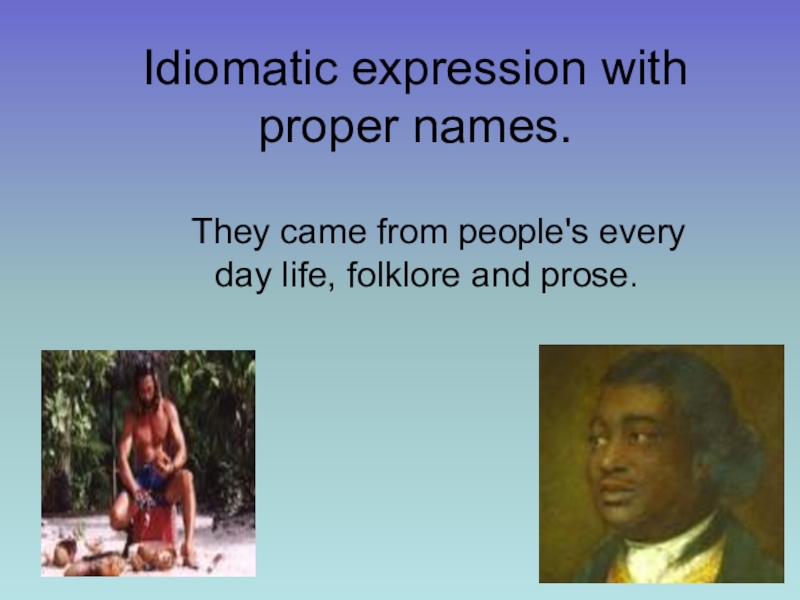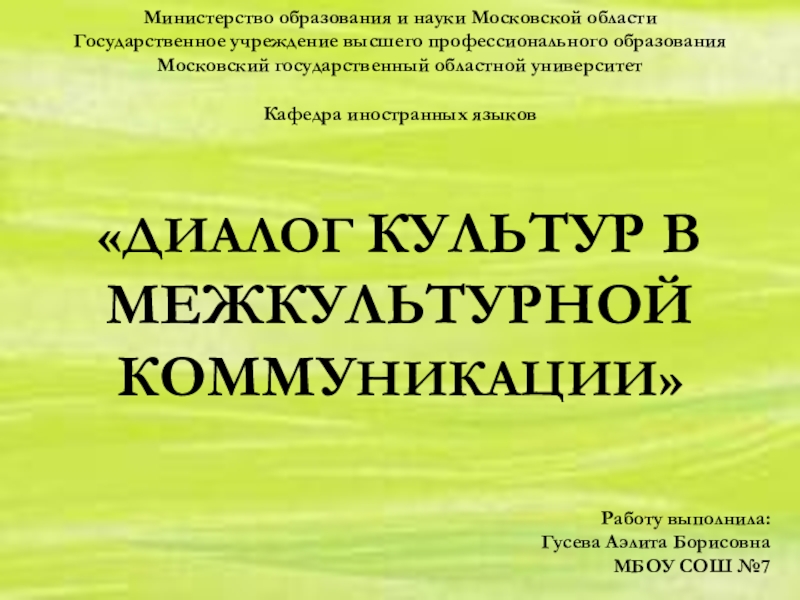project is done by the student of the 10th Form
School № 50 Hakimova E.
The teacher is Semyonova
Olga Nikolaevna
- Главная
- Разное
- Образование
- Спорт
- Естествознание
- Природоведение
- Религиоведение
- Французский язык
- Черчение
- Английский язык
- Астрономия
- Алгебра
- Биология
- География
- Геометрия
- Детские презентации
- Информатика
- История
- Литература
- Математика
- Музыка
- МХК
- Немецкий язык
- ОБЖ
- Обществознание
- Окружающий мир
- Педагогика
- Русский язык
- Технология
- Физика
- Философия
- Химия
- Шаблоны, фоны, картинки для презентаций
- Экология
- Экономика
Презентация, доклад по теме Фразеология в современном английском языке
Содержание
- 1. Презентация по теме Фразеология в современном английском языке
- 2. The aim and the tasksThe aim is:
- 3. The object is: phraseology as an integral
- 4. Phraseological units reflect the history of the English, their culture,customs and traditions.
- 5. Phraseology is the most democratic area of
- 6. We think that the students must study
- 7. Idiom is an expression whose meaning is
- 8. A dark horse is not a horse
- 9. The imagery of a bull in a
- 10. Phraseological units and free word-groups. There are two major criteria: 1.Semantic; 2. Structural.
- 11. For exampleA: I'm told they are inviting
- 12. To carry coals to Manchester makes us little sense as в Харьков со своим самоваром.
- 13. The traditional oldest principle for classifying
- 14. A great deal of idiomatic expressions were created by people.
- 15. Слайд 15
- 16. The classification system is based on the
- 17. The structural principle of classification is based
- 18. The effect of popular culture on the
- 19. Idioms connected with sport.1.Idioms according to a
- 20. Phraseological units connected with culture. Some idioms
- 21. Idiomatic expression with proper names.They came from people's every day life, folklore and prose.
- 22. In conclusion we’d like to say
- 23. Thank you for attention!
The aim and the tasksThe aim is: to review the phraseological units in the English language.The tasks are: 1.To analyze the literature on the subject; 2.To clear out typical traits of phraseological units; 3.To classify phraseological
Слайд 2The aim and the tasks
The aim is: to review the phraseological
units in the English language.
The tasks are:
1.To analyze the literature on the subject;
2.To clear out typical traits of phraseological units;
3.To classify phraseological units;
4.To make analysis of phraseological units;
5.To describe the origin and functions of phraseological units;
6. To create quizzes and a glossary with different types of phraseological units.
The tasks are:
1.To analyze the literature on the subject;
2.To clear out typical traits of phraseological units;
3.To classify phraseological units;
4.To make analysis of phraseological units;
5.To describe the origin and functions of phraseological units;
6. To create quizzes and a glossary with different types of phraseological units.
Слайд 3The object is: phraseology as an integral part and peculiar treasury
of the English language.
The subject is: phraseological units connected with sport, culture, sea and proper names.
The hypothesis is: if people use more phraseological units in their speech it will be rich, colorful, original and specific.
We used the following methods:
1. Analysis;
2. Comparing analysis;
3. Classification;
4. Creating quizzes of different types of phraseological units.
The subject is: phraseological units connected with sport, culture, sea and proper names.
The hypothesis is: if people use more phraseological units in their speech it will be rich, colorful, original and specific.
We used the following methods:
1. Analysis;
2. Comparing analysis;
3. Classification;
4. Creating quizzes of different types of phraseological units.
Слайд 4Phraseological units reflect the history of the English,
their
culture,
customs and traditions.
customs and traditions.
Слайд 5Phraseology is the most democratic area of vocabulary and draws its
resources mostly from the very depths of popular speech.
Слайд 6We think that the students must study phraseological units because it
is actual. They reflect national culture by their elements, described definite customs, traditions, their peculiarities of customs and culture.
Слайд 7Idiom is an expression whose meaning is not predictable from the
usual meanings: kick the bucket, hang one's hand.
Слайд 8A dark horse is not a horse but a person about
whom no one knows anything and so one is not sure what can be expected from him.
Слайд 9The imagery of a bull in a china shop lies very
much on the surface: the idiom describes a clumsy person.
Слайд 10Phraseological units and free word-groups.
There are two major criteria: 1.Semantic;
2. Structural.
Слайд 11For example
A: I'm told they are inviting more American professors to
this university. Isn't it rather carrying coal to Newcastle? (В Тулу со своим самоваром)
B: This cargo ship is carrying coal to Liverpool.
B: This cargo ship is carrying coal to Liverpool.
Слайд 13 The traditional oldest principle for classifying phraseological units is passed
on their original content and might be alluded to as «themantic».
Слайд 15
Phraseological units
connected with sea:
To be all at sea – to be unable to understand.
To sink or swim – to fail or succeed in deep water.
On succeed the rocks – to be in strained financial circumstances.
connected with sea:
To be all at sea – to be unable to understand.
To sink or swim – to fail or succeed in deep water.
On succeed the rocks – to be in strained financial circumstances.
Слайд 16The classification system is based on the semantic principle.
1. Units with
partially transferred meanings;
2. Units with completely changed meanings.
2. Units with completely changed meanings.
Слайд 17The structural principle of classification is based on the ability to
perform the same syntactical functions of words:
1. Verbal;
2. Substantive;
3. Adjectival;
4. Adverbial;
5. Interjectional.
1. Verbal;
2. Substantive;
3. Adjectival;
4. Adverbial;
5. Interjectional.
Слайд 18The effect of popular culture on the language is beyond questioning.
That's Cool with me!
She's a real Hotty.
We can argue about the legitimacy of its usage, but we can't deny its penetration in our culture.
Слайд 19Idioms connected with sport.
1.Idioms according to a particular sport or game;
2.Idioms associated with words such as «ball», «game», «play».
Слайд 20Phraseological units connected with culture.
Some idioms of the «world wide
English» have been first seen in the works of writers like Shakespeare, Sir Walter Scot and Lewis Carroll.
Слайд 21Idiomatic expression with proper names.
They came from people's every day life,
folklore and prose.
Слайд 22 In conclusion we’d like to say that we fulfilled our
tasks:
1. We analyzed the literature on the theme;
2. We cleared out the typical traits of phraseological units;
3. We clossified phraseological units;
4. We made analysis of phraseological units;
5. We described the origin and functions of phraseological units;
6. We created quizzes and a glossary with different types of phraseological units.
We proved our hypothesis that if people use more phraseological units in their speech it will be rich, colorful, original and specific.
1. We analyzed the literature on the theme;
2. We cleared out the typical traits of phraseological units;
3. We clossified phraseological units;
4. We made analysis of phraseological units;
5. We described the origin and functions of phraseological units;
6. We created quizzes and a glossary with different types of phraseological units.
We proved our hypothesis that if people use more phraseological units in their speech it will be rich, colorful, original and specific.

